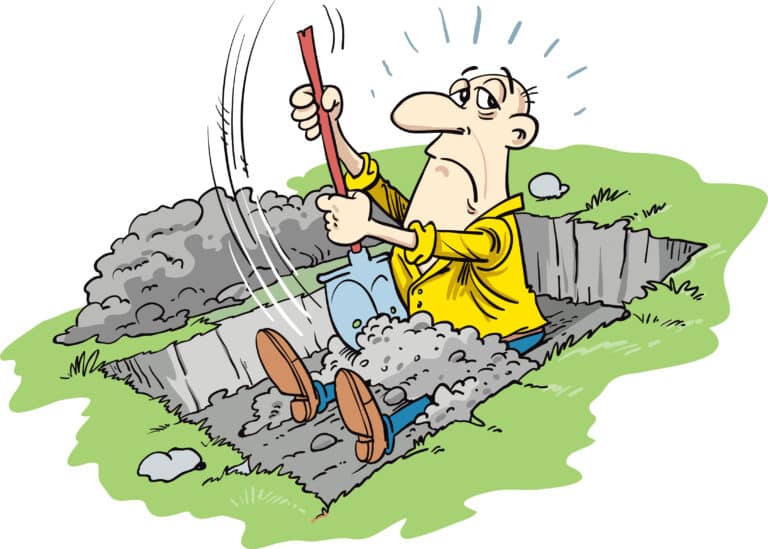The fridge has stopped working and your frozen food is melting. You call your usual appliance repair service only to be told their previous cadre of four technicians has dwindled to two overloaded workers. They’ll do their best to come as soon as possible but can’t give a specific date. You contact friends about stuffing some food in their freezer and then try to use up the rest before it goes bad. Welcome to the great Canadian skilled trades shortage.
It goes far beyond your local appliance technician, a nationwide problem hitting every industry, every business, every consumer, every homeowner or tenant. A shortage of aircraft mechanics is making it increasingly difficult to keep planes safely in the air. A construction boom in housing and commercial buildings has created unprecedented demand for skilled building trades. The need to replace aging transportation infrastructure is occurring even as population growth requires new highways and bridges. And the list goes on, affecting or afflicting many of the approximately 300 recognized skilled trades in Canada.

The shortages are already chronic in some areas while erupting suddenly in others. Some are merely inconvenient or annoying, while others could prove crippling to whole industries, and some may be downright life-threatening. Results of a survey by the Canadian Manufacturers and Exporters released on October 25 found that an incredible 62 percent of member companies over the past year had lost or had to turn down contracts, or had paid late delivery penalties, because they lack skilled workers, generating an estimated $13 billion in economic losses. Welders, millwrights and machinists were in the shortest supply. Overall, twice as many survey respondents reported difficulty finding skilled labour as they did five years earlier. Worrisomely for the future, 43 percent of companies reported cancelling or deferring planned investments due to insufficient skilled labour.
Many parents and teachers simply assume that a university degree opens a sure path to better pay, greater opportunity, broader horizons and social acceptance at the highest levels. They don’t know – or don’t want to know – that entering a trade is anything but a dead end.
Collectively these skilled labour shortages threaten the efficient functioning of Canada’s entire economy, plus our individual ability to manage our households and daily lives. They can only increase the offshoring of manufacturing that has hollowed out industries across North America and weakened us geopolitically. But how did they develop? A big part of the answer is demographics. In brief, the skilled trades labour force is aging out. This process was building slowly for at least a decade – but then accelerated sharply two years ago. Many of the baby boomers who built or maintained virtually all the things we take for granted in our modern way of life retired during the Covid-19 shutdowns. And there are many more retirements to come. A report released last January by Employment and Social Development Canada projects that 700,000 skilled trades workers will retire by 2028.

Why aren’t they being replaced? Part of the answer is a stigma common among parents and secondary school teachers that trades college is less “respectable” than university attendance. They simply assume that a university degree opens a sure path to better pay, greater opportunity, broader horizons and social acceptance at the highest levels. They don’t know – or don’t want to know – that entering a trade is anything but a dead end. An experienced tradesperson with a good record can earn well over $100,000 per year even without moving on from their trade. And many can do so because thousands of companies, including some of Canada’s largest, are staffed and even led by former tradespeople who used manual labour as a foundation, moving onward into technical or management positions and even up into the corporate suite.
But the condescending attitude of too many parents and teachers means that many students better suited to skilled trades instead enter lower academic requirement liberal arts programs that prove of little use to themselves or society. As a result, arts enrollment is mushrooming – along with the costs of tuition, fees, academic materials and, consequently, student debts. The University of British Columbia’s Annual Enrolment Report 2020-2021 provides a lamentable example. UBC’s arts faculty had twice the combined enrollment of engineering, pre-medicine and all other sciences, skills that are also in critically short supply.
For graduates of many arts-related “disciplines” and “studies” programs, what awaits them is not a fascinating job at high pay with job security and a path to advancement – but scraping for anything they can get in the service sector. What would most parents really rather see their son or daughter doing: earning $50 per hour installing the electrical system in a new office tower, or $20 per hour as a barista making cappuccinos for electricians on their coffee break? Canada’s manufacturing sector as of mid-year had more than 86,000 vacancies.

The problem can’t be getting any help from the open disdain shown by our prime minister and much of the urban elite for the jobs and roles – and sometimes the actual people – associated with producing and processing natural resources, staffing the “smoke-belching” industries that depend on them, constructing the facilities that house them, or operating the trucks that keep supply chains intact. How many young adults have concluded there’s no future for them in jobs like these, that they’re totally uncool, that they’ll be shunned if they choose such a path and their social media “friends” find out? How many parents have steered their kids in a different direction, even if they were ideally suited for a trade? In another sign of government schizophrenia, the same Employment and Social Development site linked above talks proudly of a new federal advertising campaign aimed at encouraging young people to consider a trades career. Tax dollars allocated to counter the prime minister’s trash talk.
Women historically were discouraged from trades careers by chauvinistic attitudes. A new generation of tradesmen, however, is much more supportive of women tradespersons. So are employers, many of which have programs aimed at bringing women into their workforces and supporting them for long-term success.
The fact is, skilled trades training provides the opportunity for fulfilling careers, both professionally and financially. Moreover, many tradespersons build their own successful businesses. But the big question remains. What can we do to close the skilled trades gap? The demographic trend of retirements exceeding new apprentices was already evident in 2011 when I became volunteer Chair of B.C.’s Industry Training Authority (ITA), the organization responsible for funding and facilitating trades training in the province.

While our first goal was to bring the number of new incoming apprenticeships into balance with retirements, we knew that the province’s rapidly growing economy would require many more than that. To offset the pro-university attitudes of parents and schoolteachers, we needed to expose students to the great variety of opportunities in the trades and the benefits of choosing a trades career well before they left high school. “Trades Discovery” programs that connected students with apprentices and practising tradespersons were initiated, with participation counting toward high school credits. Other provinces have since introduced similar high school programs, including Ontario’s trades “boot camps.” These programs achieved considerable success – but couldn’t cover every trade in Canada nor generate the truly vast numbers required.

So the shortages persisted and, since Covid-19, have ballooned into the situation we’re in today. The good news is there’s a relatively untapped demographic with great potential to narrow the trades gap: women. Women historically were discouraged from trades careers by chauvinistic attitudes. A new generation of tradesmen, however, is much more supportive of women tradespersons. So are employers, many of which have programs aimed at bringing women into their workforces and supporting them for long-term success.
But women often have challenges that most men don’t have. Many are single working moms. Government programs provide the tuition fee for their apprenticeships, but childcare and living support often remain insurmountable barriers. Women who live beyond commuting distance must find funding for accommodation and living support. Here, too, progress is being made. Victoria’s Camosun College has an exemplary program, supported by private funding, called Empowering Women in Trades. Over the past five years, the program has helped 220 female students achieve their dream of trades qualification. Some of these are Indigenous and new immigrants, adding new sources of largely untapped female workers.
Much more needs to be done across the board, but this is a promising beginning. Next time one of your appliances fails, a smiling woman may arrive lugging her tool kit. You – and the whole nation – can be grateful to her and others like her.
Gwyn Morgan is a retired business leader who has been a director of five global corporations.
Source of main image: Shutterstock.





